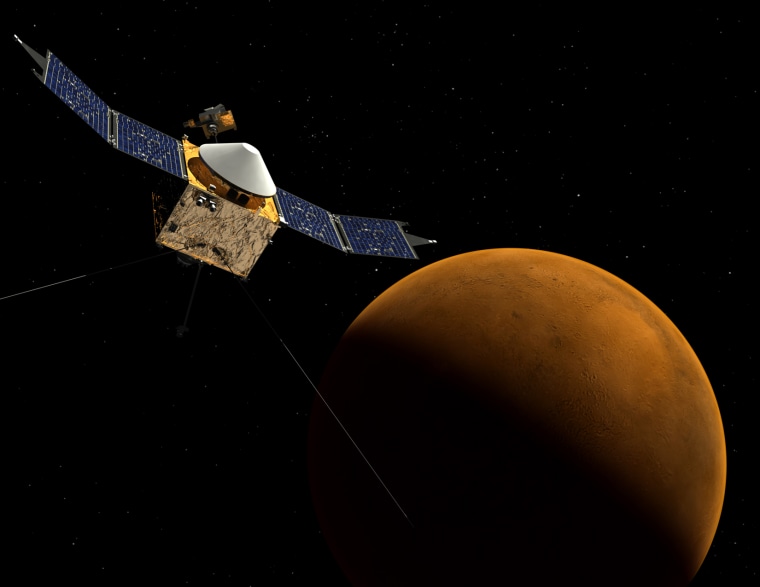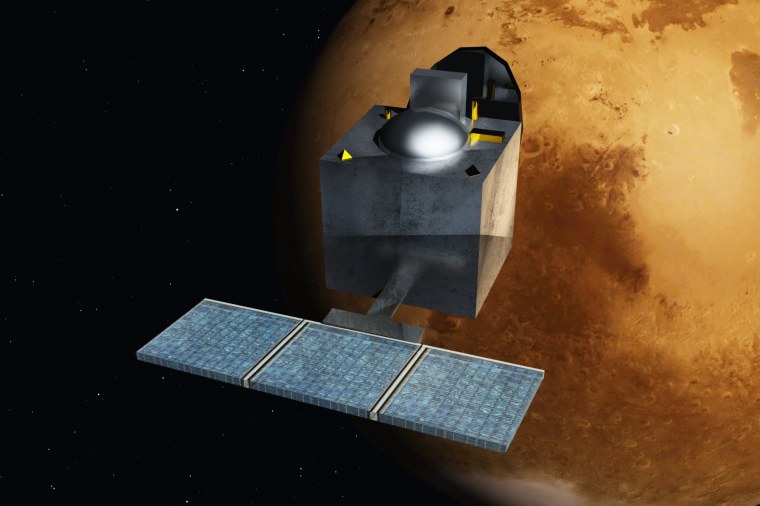Not one but two new spacecraft arrived at Mars this past week. That brings the total number of manmade objects on or in orbit around the planet (dead or alive) to approximately 18! The two new kids on the planetary exploration block are MAVEN and MOM.

MAVEN (or Mars Atmosphere and Volatile Evolution) is NASA's latest mission to Mars and the first to focus on studying the upper atmosphere of the red planet (video). MAVEN launched from Cape Canaveral last November and successfully arrived at Mars on Sunday night, Sept. 21 EDT. MAVEN is designed to investigate how the loss of volatiles (such as carbon dioxide, nitrogen, water, and methane) in Mars' atmosphere could have contributed to changes in the planet's climate history and habitability. To do this, MAVEN will be in a highly elliptical orbit, swinging as close at 93 miles above the surface of Mars to as far as 3728 miles away. The spacecraft will pass through the upper Martian atmosphere with each orbit, so it sample the gas content directly. On the opposite end of the orbit, additional instrumentation will be imaging the entire planet in ultraviolet light as part of studying the reaction of the atmosphere to solar radiation.

MOM (Mars Orbiter Mission, or Magalyaan "Mars-craft" in Sanskrit) is the Indian Space Research Organization's (ISRO) first interplanetary mission, making India the first country to ever successfully put a spacecraft into orbit around Mars on the first attempt (no small feat!). MOM also launched last November, from the Satish Dhawan Space Centre in southeast India, and arrived at Mars on Wednesday morning, Sept. 24 IST. MOM will also be in an elliptical orbit, but not come nearly as close to Mars as MAVEN will (between 263 and 50,000 miles). That's because MOM is actually more of a technology demonstrator as opposed to a scientific spacecraft. The primary goal of the mission is to test the design and technology developed to launch an orbiter to Mars and maneuver it into orbit around the Red Planet. They did put scientific instruments aboard to take advantage of the successful placement in Mars orbit. MOM's secondary mission is to study Mars' surface mineralogy as well at its atmosphere.
If you think all the excitement is over for now, stay tuned for the inevitable flood of new Martian desktop backgrounds.
In other more earthly geek, I've been on summer hiatus, so here is some geek to catch up on:
Welcome to a new season of geek!
